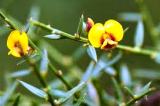


If an area is marginal, we put it back to what it was, and if it’s productive – we make it 100 per cent productive. Recently elected chair of the Endangered Species Foundation, Stu says conservation projects and profitable farming can co-exist: “It’s a really basic philosophy. Kereru, tui, kaka and kotuku grace the home farm bittern and fernbird are increasing at the swamp the waters are home to whitebait, freshwater mussels, crayfish, eels and mullet. As mustelids, possum and rat numbers dropped, birds and marine life returned. They have introduced pest control over a 400ha area. With a grant from the Waikato River Authority (a joint iwi-Crown organisation that supports projects to clean up the river and tributaries), they have sown 40,000 plants in the wetlands and 8500 plants at a fenced-off sand dune lake on another family property. They have now retired 40ha of swamp from farming use and are restoring it to a native wetland, creating ponds with grasses, flaxes and native trees. As soon as you take out obstructions, you create flow and create current you bring the life back.” “There was no current, every six feet there was a willow that had fallen, there was absolutely no tidal flow, it was dead - the fish couldn’t get up there, the whitebait couldn’t get up there.
#WANDERING WILLOWS FLAX FULL#
“It had become degraded it was a dirty, stagnant, horrible remnant of what it once was - full of willows and glyceria,” he says. Stu brought in heavy machinery, removed dead willows and opened the waterways again. The farming continues – and so does the proof that dairy farming and conservation can go hand in glove, epitomised by the massive task of restoring a native wetland to its original condition (wetlands being one of the key weapons against run-off and leaching into rivers).īy 2011, the stream that used to flow through part of the property had become stagnant, blocked since the Awapuni Dam released silt that clogged the area’s natural streams in the 1920s. His great-great grandparents bought the present property in the 1890s Stu and Kim’s children are the sixth generation to live and work on the land. His family have been farming in New Zealand since the 1850s. We’re thinking six or seven generations ahead,” Stu says. “In the farming community, we usually think everything that’s done on the farm has an impact three months, six months, or a year ahead. The trip back to L'Aquila, in the evening, will be an opportunity to take the last photos or videos of Campotosto's magical world.Stu and Kim Muir take the long-term view of working their dairy farm in the Waikato River delta – the tangle of waterways, islands and wetlands close to the river mouth on the west coast. Those who want to can try the traditional weaving and bring with them the result of their work.Īnd since the small grocer's shop Sapori d'Abruzzo is next to Assunta's workshop, we will take advantage of the lunch to taste the typical products of the territory: Pecorino Cheese and salami like Mortadelline of Campotosto, Guanciale and many other specialties. Assunta will accompany us throughout our experience. Here we will discover the secrets of linen and its supply chain. A short walk in the enchanted scenery that surrounds the lake and we will arrive at Assunta's workshop, located in the center of the village.

We will discover the flax starting from its cultivation along the shore of Rio Fucino.

So I would like to tell you this story together with Assunta we will leave from L'Aquila to immerse ourselves, through unique scenarios, in the magic of Campotosto, of its largest artificial lake in Europe, now an essential refuge of biodiversity. And thanks to that bag and the passion of Assunta the linen supply chain in Campotosto has been reborn. And the seeds have multiplied and every year, in June during the linen festival, are donated to those who request it. And she picked up the baton and started cultivating the flax again. In 2002, together with Assunta, we discovered this treasure. And in that bag there were the precious seeds of flax. My great-grandmother Laurina from the beginning of the 900 and up to the age of one hundred, has cultivated the flax uninterruptedly in vases on her balcony. She jealously guarded it in one of her chest of drawers along with hr linen.


 0 kommentar(er)
0 kommentar(er)
